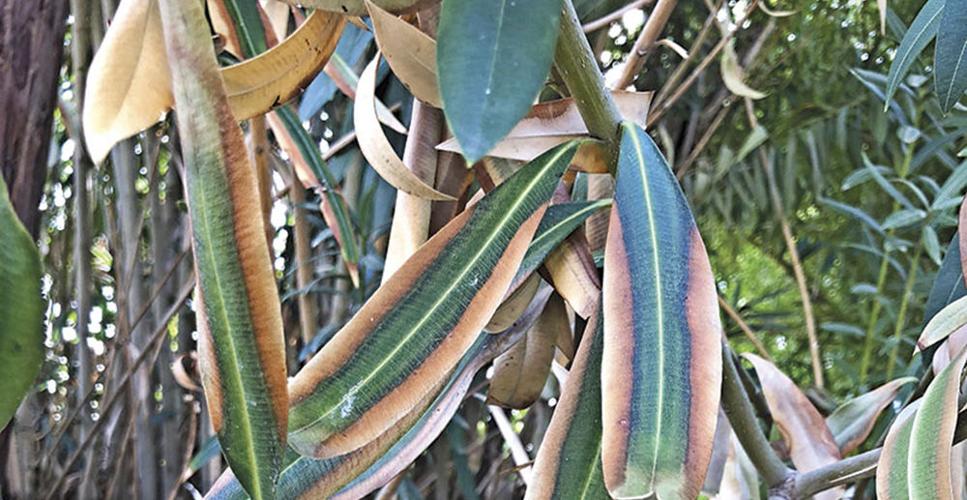For the last 10 years or so, a plant disease known as Oleander Leaf Scorch (OLS) has been spreading through the oleanders in the Arcadia and Central Phoenix area. The infection is caused by a bacterium known as Xylella fastidiosa, which overruns the oleander’s water-conducing tissue and starves the plant.
The culprit that carries and distributes OLS is a quarter-inch long flying insect called a sharpshooter. Once a sharpshooter feeds on an infected oleander, any other oleander shrub it feeds on will become infected with the disease. A sharpshooter that has been infected with the X. fastidiosa bacteria will carry it for life. They are fast-moving insects that are difficult to catch and nearly impossible to eradicate. There is no known cure for this disease, and most infected oleander are dead within 3-5 years, depending on their size.
What to look for
If you’ve noticed the oleanders turning color, take a closer look. Is the plant changing overall or is it just a portion of it? Leaves that are browning from the middle-out, or plants that are yellowing all over could just be a sign of drought or salt-toxic soil.
OLS is usually seen in just portions of the plant, not throughout. The leaves will begin to droop as they turn lighter shades of green, yellow and brown from the outside-in. Once the disease has taken hold, outer edges of leaves start turning brown, with a burnt (scorched) appearance. This will gradually move in toward the middle vein of the leaves as it kills the plant. Symptoms of the disease are seen year-round, but they spread more rapidly in the summer.
What to do next
Oleander usually respond pretty quickly to water. If the plant is still yellowing after a few days, it is likely to have OLS. Once a portion of an oleander contracts the disease, the entire plant is infected. If the oleanders are part of a long stand, the entire group might be at risk. Experts recommend removing infected plants completely to prevent the disease from spreading, even though the sharpshooters may have moved on to another area.
Although there are characteristic signs to look for OLS, only a lab can confirm the presence of the disease. Contact the AZ Department of Agriculture for more (agriculture.az.gov).
Some replacement plants to consider include Arizona rosewood (Vaquelinia californica) and hop bush (Dodonaea viscosa), which are tall green shrubs that are immune to the disease.
Special thanks to Horticulturist and Arborist Noelle Johnson, the “AZ Plant Lady” (azplantlady.com) for her assistance with this article.



